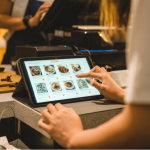Having a plan in place for effective hotel revenue management can help you secure profits.
NB: This is an article from Lybra, one of our Expert Partners
In the hotel industry, things can change very rapidly, and how much money you make at your property depends heavily on pricing, demand, location, and seasonality. Hoteliers use a range of KPIs (key performance indicators) to get a well-grounded overview of the revenue their property generates.
Subscribe to our weekly newsletter and stay up to date
But, which hotel revenue management KPIs should you focus on more so than others? We’ll touch on seven KPIs that you want to track for your hotel, as well as how these revenue formulas contribute to your hotel’s overall financial performance.
1. ADR (Average Daily Rate)
Hotel pricing is usually fluid, and the room prices will fluctuate according to capacity, views or size. Hoteliers use this KPI as a revenue formula to help them determine the average revenue any type of room draws on a certain day. This KPI can vary greatly from hotel to hotel, and the biggest influencers on it are location, seasonality and whether you’re in a corporate or tourist market.
Say your hotel has 34 rooms available, and you sell 23 of those rooms in a single day at different price points to give you a revenue of £1,990. To get your average daily rate, you’d divide this price by the number of rooms sold to get £87. By tracking this KPI, you can set out pricing strategies that adapt to demand changes while covering your operating costs. The higher your ADR goes, the more money you make from occupied rooms.
2. RevPAR (Revenue Per Available Room)
RevPAR is arguably one of the most important KPIs for hotel revenue management. It will tell you how much money you made per available room, instead of just telling you how much money you made from rooms that are occupied like ADR does. In turn, it gives you a bigger picture of your hotel revenue.
A high RevPAR usually indicates improvement in your occupancy rate and ADR, and this will help you figure out the right price point to draw in the most revenue possible over a specific time. To calculate the RevPAR, you’ll take your total room revenue and divide it by the rooms available. You can also find it by multiplying the ADR by the occupancy rate.
3. Occupancy Rate
The occupancy rate will let you know how much available space you’re using at any given day. To calculate your occupancy rate, you’ll divide the total number of rooms you have occupied by the number of rooms you have available. So, say you have 23 out of 34 rooms occupied on a single day. To get your occupancy rate, you’ll divide 23 by 34 to get 0.68, or a 68% occupancy rate. Maximising your occupancy rate will boost your revenue because you’ll sell the most rooms possible on any given day.
4. Booking Window
Your booking window is a count of the days between when your customer booked the room and the actual check-in date. Understanding this KPI can help you optimise and adjust your room prices and stay restrictions to maximise occupancy. So, if you know it’s a busy season coming up and you notice bookings trickling in, you can research the average room rate and adjust yours accordingly.
5. GOPPAR (Gross Operating Profit Per Available Room)
This KPI will give you a much broader insight into your whole hotel setup than you can get from revenue alone. It shows you how much money you’re putting into your operation, and you can compare this to your revenue to get a more in-depth scale of your hotel’s financials.
To calculate GOPPAR, you need to take your operating expenses and subtract your gross revenue. Get this figure and divide it by the total number of rooms. So, let’s say you have a gross revenue of £3,680,000 for a full year from 250 rooms. Your operating expenses are £500,000. To get the GOPPAR, take £3,680,000 and subtract £500,000 to get £3,180,000. Divide this figure by 250 to get a GOPPAR of £12,720.
6. NRevPAR (Net Revenue Per Available Room)
This is the KPI you’ll use to figure out the net revenue you get for every available room in your hotel. It usually refers to the net revenue each room generates with any costs you incurred distributing the room subtracted. It gives you a picture of how successful your hotel is at generating revenue on every available room.
You can use it to make calculated pricing adjustments to help increase occupancy levels. To calculate it, you’ll get your room revenue and subtract the distribution costs. Then, you’ll divide your figure by the number of available rooms.
7. TRevPAR (Total Revenue Per Available Room)
TRevPAR is a KPI that hoteliers use to understand your hotel’s overall performance results. It tells you how effectively your hotel is generating revenue. You calculate this metric by dividing your total net revenue by the total number of rooms you have. So, the total revenue is the net revenue the hotel generates, including add-ons and amenities. The rooms available are the number of rooms you offer at any given time.
Bottom Line
There are many variables any hotelier needs to consider in order to improve all of their KPIs and create a successful hotel. Tracking these metrics can be a very time-consuming process, and a revenue management system like Lybra Assistant RMS is vital to helping improve these KPIs. Lybra Assistant is an RMS that uses machine learning to automate these processes, and it can forecast demand and automatically perform dynamic pricing.
The post Focus on These Hotel Revenue Management KPIS to Increase Profitability appeared first on Revenue Hub.































